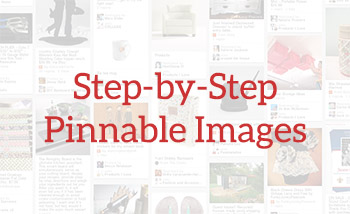Visual social media site Pinterest is now the biggest driver of visits to e-commerce sites, and it can be very useful for brand sites, too. The key to getting others to pin and repin your content at Pinterest is making sure you have pin-worthy images. Working from our previous discussion of pinnable images, here’s a quick step-by-step guide to get you started on making images perfect for pinning.
Think before you shoot.
Think about the planned content and how it can be best presented at Pinterest before taking photos. It often helps to write the text first and then decide how you want to present the information visually. For example, take this post about an ice box cake recipe we wrote for client Natural Fruit Corporation’s Chunks O’ Fruti brand. Recipes are super popular at Pinterest, so a recipe is highly pinnable content.
Since Pinterest users and blog readers want to see the finished product to decide if they want to make it, it’s best to use a photo of the finished ice box cake. The photos should also display what is inside of the cake to further tempt readers.
We also want to frame the photo so we can add text to help readers and Pinterest users know what the pin is about and where they can find the content. When staging objects, it’s important to think about how the compression to two dimensions will affect the visual appearance. Always take far more photographs than you think you’ll need using different angles, perspectives, backgrounds, and open spaces as much as possible.

In the example of the ice box cake, I took lots of photos from different positions to figure out what worked best. Going from left to right, top to bottom, each of these photos has an issue to watch for when making your own images.
- Adding lines of chocolate syrup help show the shape better, instead of a block of what looks like something you wouldn’t want to eat. Prepping the object to look its best is important.
- The cutting knife in the background detracts from the clear image and the edge of the cake doesn’t look appealing. Make sure to think about how your background will look in the finished photo.
- This is a classic example of flatness problems when converted to a two-dimensional image. This doesn’t clearly look like a cake. Ensure that your image clearly displays the object so others can understand what the object is.
- Slightly better with positioning for adding text but again has problems with a distracting background and still looks somewhat flat, although the lines of chocolate help mitigate that slightly.
- The angles and blur caused by a low aperture don’t show the cake well and the slice looks pretty flat, although it does highlight what’s inside the cake better.
- This shot suffers from a distracting background as well as an awkward angle with the slice of cake that doesn’t show off the best side of the cake. It’s also too dark and would need to be brightened up if it was a better shot.
Pinterest users also like to see text on photos. You can use a graphics program such as Photoshop to add words to the photo.
Choose your best photos and try some text on for size and play around with fonts, colors and sizes until you get something that clearly conveys the pin’s content. It’s a good idea to keep a cohesive look across your content, both in visual cues like colors and fonts and also in the words you use for text in photos. Add information about where pinners can find the post too, in case it gets detached, with a URL or some other clue.
Now you have a pin-worthy photo, like this finished one at the right. This has angles that display the shape of the object plus what’s inside the cake, as well as space for text and a clear message. I’ve also included the recipe’s name and the brand name, Chunks O’ Fruti, in case the pin becomes detached from the link.



Leave a Reply